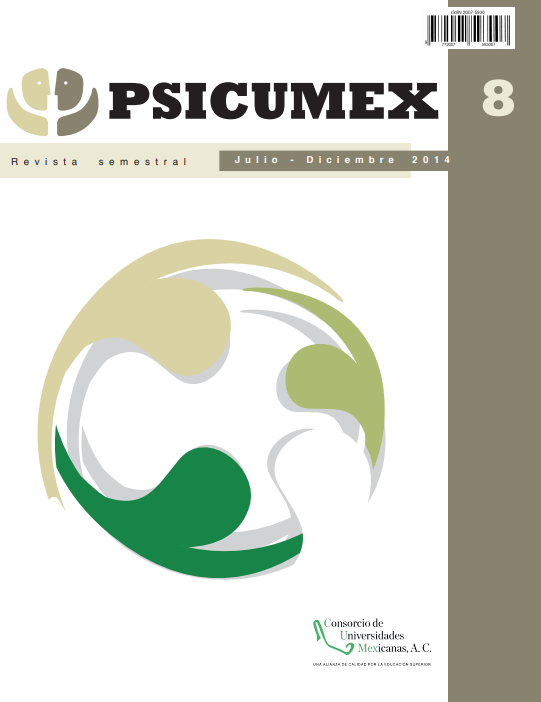Abstract
The objective of this study was to determine the effect of the thermal environment of social housing in the psychological well-being of its residents in two seasons (summer and winter), starting to develop and test two structural equation models.The study was conducted in Hermosillo, Sonora, Mexico, a city located in a semi desert, arid and warm climate. The study of meaning and environmental perception involves two aspects included in this job: One is an objective or physical component, and the second one is a subjective component. The first one was indicated by features of the physical context, which affect the meaning attributed to it, and the second, one by a set of internal representations about the environment including the emotions produced experienced by people. An evaluation was conducted considering the above-mentioned components. The first one was evaluated using tools that assessed the housing thermal conditions, and the second one through an instrument adapted and validated for this study with the purpose of assessing aspects related to psychological well-being. The main finding we mention that the obtained models showed that the thermal environment inside the housing affects the psychological well-being of people only in the summer season as a negative and significant relationship between the two factors is observed and not this relationship is presented significant in the model developed for the winter.
References
Aragonés, J. I., & Amérigo, M. (2000). Psicología Ambiental. Aspectos conceptuales y metodológicos. En J. Aragonés & M. Amérigo (Coor.), Psicología Ambiental. Madrid: Pirámide.
Baron, R. (1972). Aggression as a function of ambient temperature and prior anger arousal. Journal of Personality and Social Psychology, 21, 183-189.
Baron, R. (1978). Aggression and heat: The “long hot summer”. En A. Baum, S. Valins & J. E. Singer (Eds.), Advances in Environmental Research (pp. 186-207). Hillsdale, NJ: Lawrence Erlbaum Associates Inc.
Bell, P. A., & Greene, T. C. (1982). Thermal stress: Physiological, comfort, performance, and social effects of hot and cold environ- ments. En G. E. Evans (Ed.), Environmental Stress (75-104). EUA: Cambridge University Press.
Bell, P. A., & Fusco, M. E. (1989). Heat and violence in the Dallas field data: Linearity, curvilinearity and heteroscedasticity. Journal of Applied Social Psychology, 19, 1979-1982.
Bentler, P. M. (2006). EQS Structural Equations Program Manual Multivariate Software. California: Encino.
Cassidy, T. (1997). Environmental Psychology. Behavior and experience in context. Birmingham, UK: Psychology Press.
Cohen-Sánchez, L. (2009). Efectos de la intensidad de la luz en el ser humano y su expresión a través del color de la vestimenta. Anales Universitarios de Etología, 3, 29-35.
Cohn, E. G. (1993). The prediction of police call for service: The influence of weather and temporals variables on rape and domestic violence. Journal of environmental psychology, 13, 71-83.
Corral,V.(2010).Psicologíadelasustentabilidad, un análisis de lo que nos hace pro ecológicos y pro sociales. México: Trillas.
Cuervo, N. (2012). Los avatares de la vivienda en la investigación urbana y regional latino- americana (1990-2012). Territorios, 27, 47- 70.
Díaz, D., Rodríguez-Carvajal, R., Blanco, A., Moreno-Jiménez, B., Gallardo, I., Valle, C., & van Dierendonck, D. (2006). Adaptación española de las escalas de bienestar psicológico de Ryff. Psicothema, 18, 572-577.
Field, S. (1992). The effect on temperature on crime. British Journal of Criminology, 32, 340-351.
García-Viniegras, C. (2005). El bienestar psicológico: Dimensión subjetiva de la calidad de vida. Revista Electrónica de Psicología Iztacala, 8, 1-20.
Hernández, B. G., & Gómez A. A. (2007). La temperatura ambiental y su vinculación con el aprovechamiento escolar. Palapa, Revista de Investigación Científica en Arquitectura, 2, 21-30.
Holahan, C. J. (2010). Psicología ambiental un enfoque general. México: Limusa.
Keller, M. C., Fredrickson, B. L., Ybarra, O., Cote, S., Johnson, K., Mikels, J., & Wager, T. (2005). A warm heart and clear head: The contingent effects of weather on mood and cognition. Psychological Science, 16, 724- 731.
Lambert, G., Reid, C., Kaye, D., Jennings, G., & Esler, M. (2003). Increased Suicide Rate in the Middle-Aged and Its Association With Hours of Sunlight. The American Journal of Psychiatry, 160, 793-795.
Lewin, K. (1964). Field Theory in Social Science: Select theoretical papers. New York: Harper and Row.
Lionel, C. L. & Olivera, S. M. (2013). Evaluación económica de la resistencia térmica de la vivienda de interés social en las ciudades tropicales de México. Acta Universitaria de la Universidad de Guanajuato, 23, 17-29.
Lotito, C. F. (2009). Arquitectura, psicología, espacio e individuo. Aus (Valdivia), 6, 12-17. ISSN 0718-7262.
Ponce, G. (2011). Habitar en México: Calidad y rezago habitacional en la primera década del milenio [Publicado en versión preliminar del documento de trabajo No. 112 del Centro de Estudios Sociales y de Opinión Pública de la Cámara de Diputados, LX Legislatura]. México.
Rim, Y. (1975). Psychological test performance of different personality types on Sharav days in artificial air ionization. International Journal of Biometeorology, 21, 337-340.
Rosen, S. (1985). The weather: Wendy and grounchy. The Catholic Digest, 94-97.
Rosenthal, N. E. (1993). Winter blues. New York: Guilford Press.
Sánchez, C. J. (1998). Escala de Bienestar Psicológico. Madrid: TEA Ediciones.

This work is licensed under a Creative Commons Attribution-NonCommercial-NoDerivatives 4.0 International License.
Copyright (c) 2014

